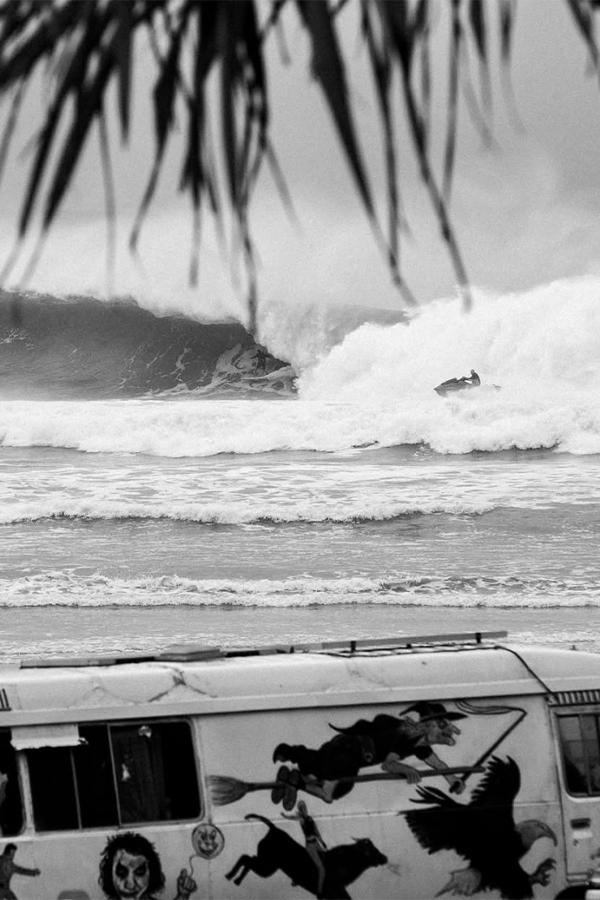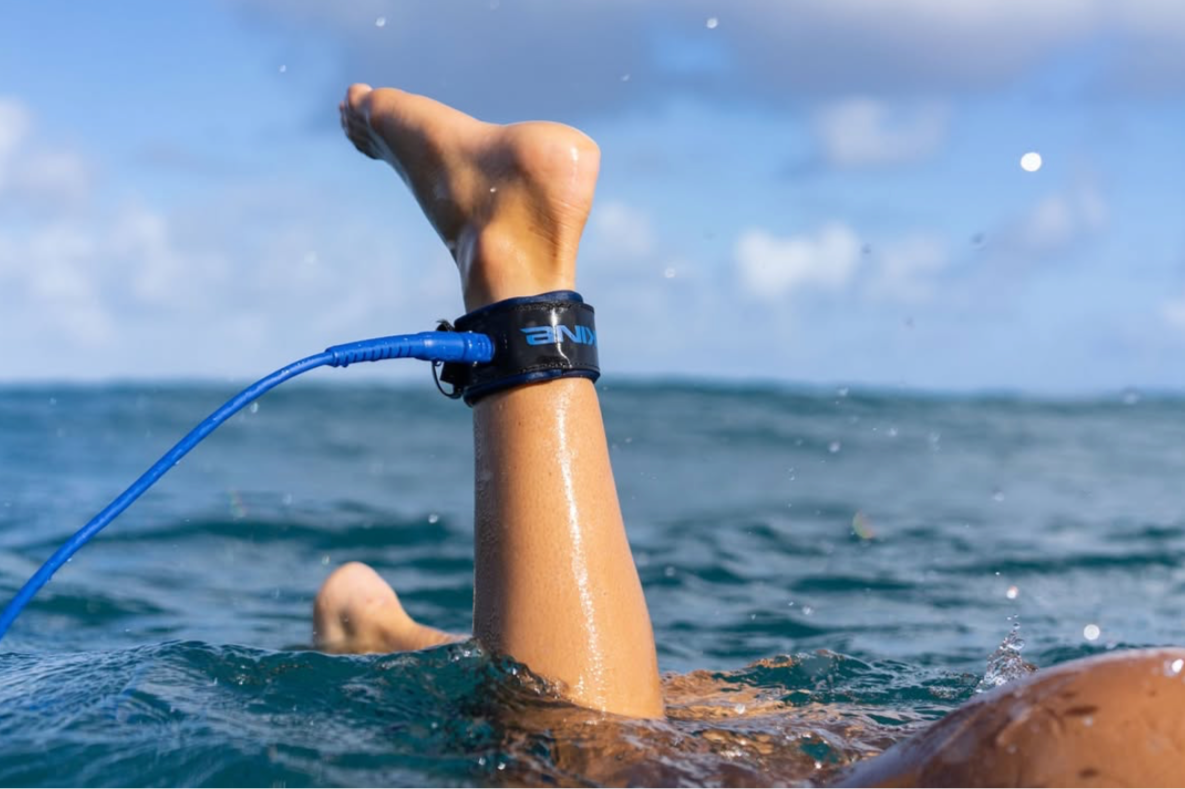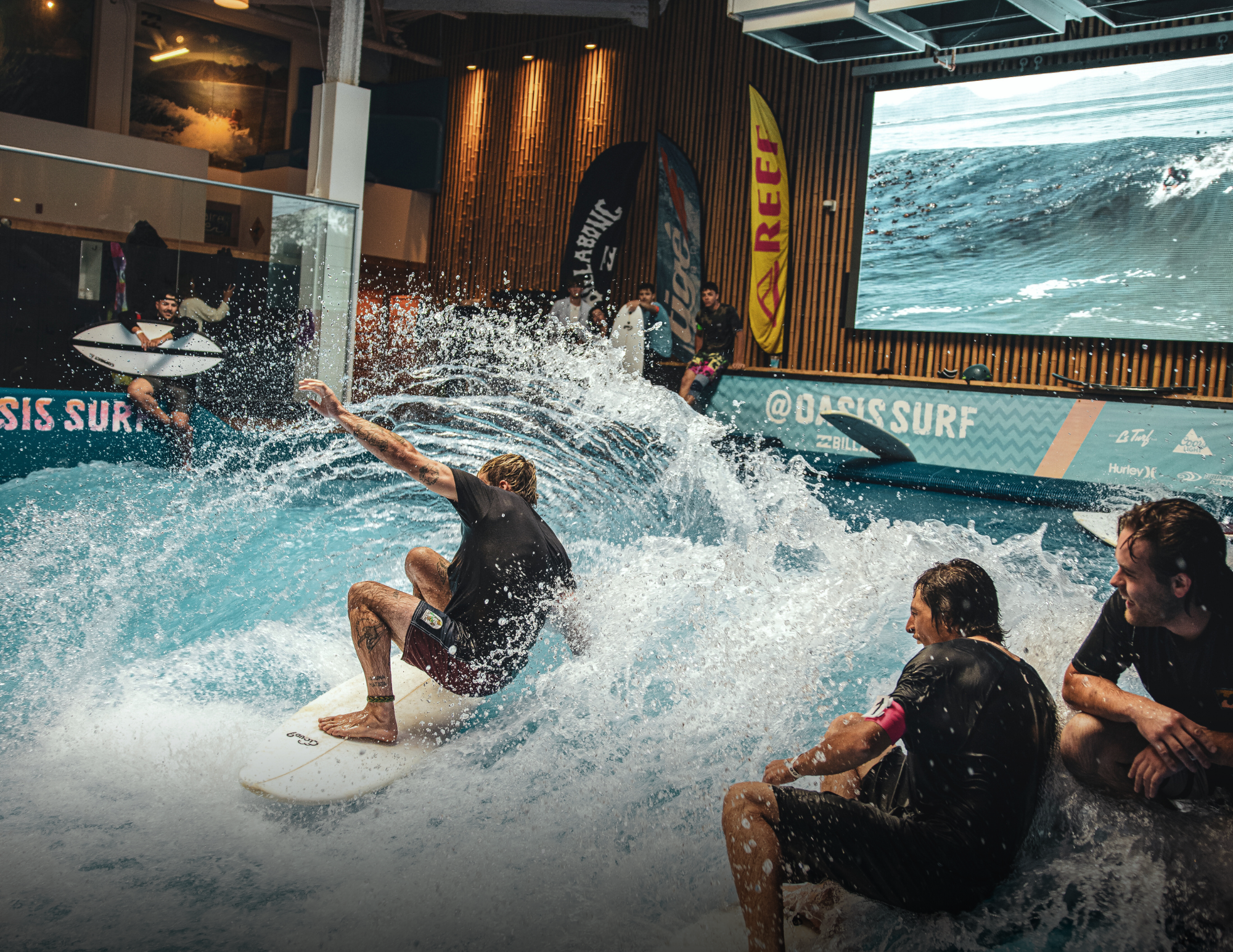Ways to describe a surfer
Regular:
surfers with their left foot in front, and their right foot at the back of their board. Generally speaking, right-handed people are consistent, but not 100% of the time.
Goofy:
the opposite of regluar
Kook:
If someone uses this term to refer to you, it's not a good sign! A kook is a public danger, someone who doesn't hold their board while crossing the waves, who doesn't respect the order of priority in the line-up, basically, someone you don't want to be friends with in the water, or even outside of the water. If you accidentally make a kook of yourself, go apologize to the person concerned, it will then be less awkward to walk around town.
Drop-in:
When someone “steals” a wave they didn’t have right of way on. That person will definitely be called a KOOK.
Line-up:
indicates surfers waiting their “turn” to catch a wave. On a beach break, surfers are more spread out because waves don’t always break in the same place, while on a point break, since the wave always breaks in the same place, surfers wait closer together. Note that respect is of the
utmost importance in surfing, and it’s considered good manners to wait your turn, let locals pass, and so on (see article on surfing etiquette).
Weather conditions
Onshore, offshore:
refers to the wind direction. When it's onshore, the wind comes from the ocean and blows toward the beach, and an offshore wind comes from the land and pushes toward the ocean. The latter is desirable for better waves.
Wave Types
Pointbreak
: when a wave always breaks in the same place, usually when the water hits a fixed surface, such as an island or a large rock, or coral on the bottom of the water.
Beachbreak:
When a wave breaks on the sandbars at the bottom of the ocean. Surfers have to move around the lineup more to catch their waves since they don't always break in the same place.
Paddle:
when you're lying flat on your stomach on your board and paddling to move forward. This is the hardest part for many beginner surfers.
Swell:
If you hear a big swell coming, attach your leash with a pin, the waves are coming to town!
Lip:
The lip of a wave is the portion of water at the top of a wave that will fall in front of it. Some waves have more impressive lips than others, like the one at Teahupo'o, which is among the most massive.
Peak:
the highest point of the wave just before it breaks.
Shoulder:
on each side or on one side of the peak, the wave takes the form of a shoulder, that is to say it gradually decreases in height.
Close out:
when the wave suddenly closes and there are no surf shoes.
Equipment: Boards and accessories
END:
fin that is attached under the board. Different fin setups give different characteristics to its equipment: maneuverability, speed, stability.
Foamie:
foam board.
Shortboard
: short board popular with experienced surfers.
Longboard:
long board, perfect for smaller waves and for doing “steppettes” i.e. walking on your surfboard.
Fish:
No, we are not talking about fish in the ocean, but rather a type of board, generally short and rather wide, with a tail shaped like a fish tail.
Quiver:
selection of boards that a surfer owns, which is never too much by the way.
Maneuvers and figures
Cutback:
a rather aggressive type of turn that involves turning at the top of the wave and making a good splash to impress spectators both in the line-up and on the beach.
Floatter
: maneuver which consists of surfing the top of the lip of a wave, after it has broken and formed foam.
Bottom turn:
turn at the bottom of the wave, generally done before going up and doing a cut-back or float. It allows you to better reposition yourself to attack the lip of the wave.
Tube, barrel:
The ultimate dream of many surfers, it is even conjugated to say that one has “been barreled”. It involves surfing the part of a wave that forms a tube, the surfer being completely surrounded by water. In a small bar, the surfer can lean to pass through, but some say that the ultimate experience is to surf a barrel big enough to remain standing on one's board and still have water over one's head. Note that not all waves will “barrel”, a certain water power is required to form a barrel.
Wipeout:
commonly referred to as: a bad girl arrives, with high potential to have swallowed 2-3 mouthfuls of water, received a sinus rinse from the ocean and filled your swimsuit with sand.
Over the falls:
in the wipeout category, when a wave propels us in its circular motion and makes us experience a roller coaster, not only emotional but also physical. *action not recommended.
Duckdive:
technique of diving under the water with your board like a little duck to cross the waves and get to the line-up
Turtle roll:
When it is impossible to duck dive, it is possible to cross the waves by holding the rails of your board, turning it over, while keeping it parallel to the ground. The surfer then goes underwater while the wave passes.




